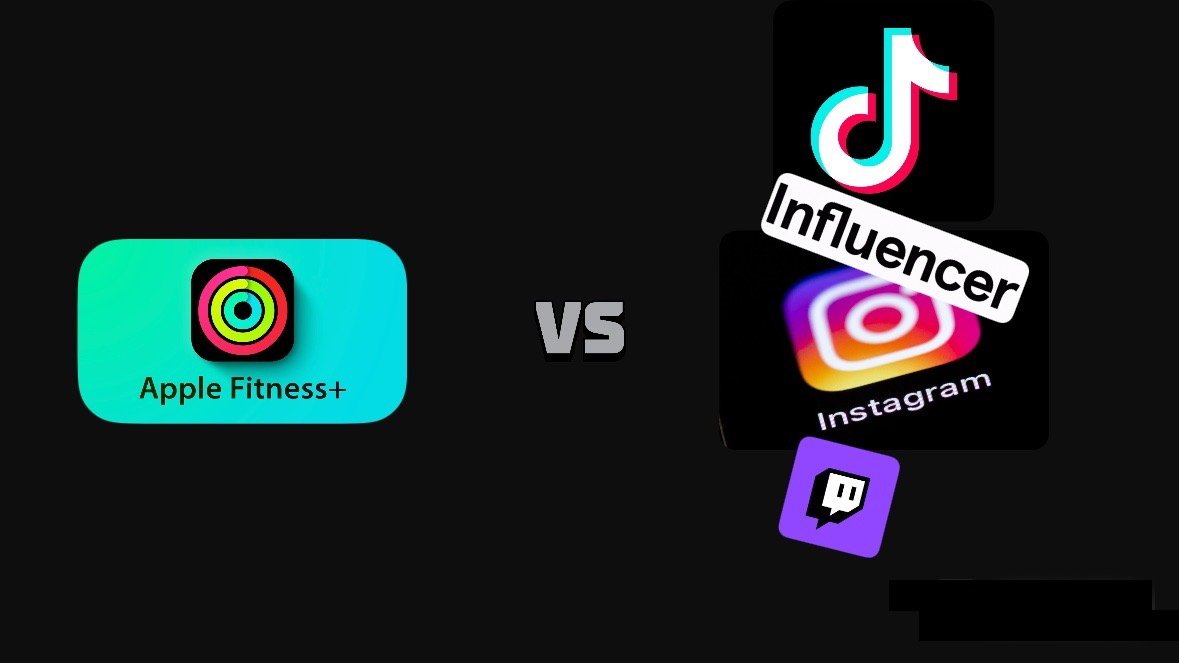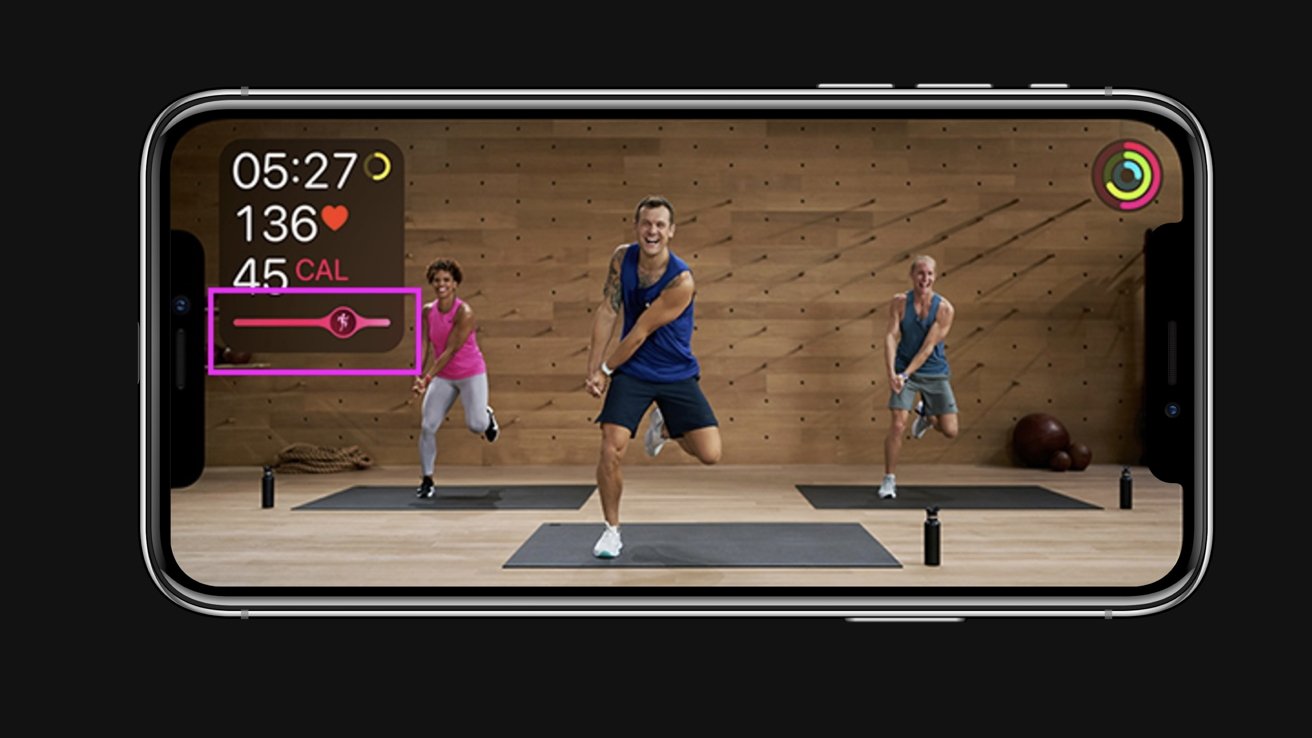AppleInsider may earn an affiliate commission on purchases made through links on our site.
Apple Fitness+ joined the workout streaming movement in December 2020. It’s a good start, but it is barely afloat next to shiny competitors brimming with personality in an ever-shifting online fitness market.
It took two years for Apple to realize that having to buy an Apple Watch to use Apple Fitness+ was not a clever marketing ploy incentivizing people to buy the watch, but an ostracization that led consumers to find other means to reach their fitness goals.
As of October of 2022, Apple Fitness+ is now available to all iPhone users, whether or not they own an Apple Watch.
Apple Fitness+ improvements and growth
Apple Fitness+ has made many improvements since its inception. Besides adding more workout modalities, these improvements have to do with subtraction and simplicity rather than addition. Less is more.
When Apple Fitness+ was first introduced, during workouts, the interface intra-workout was busy. The activity rings (red, green, and blue) showed the user their calories burned during the day, activity calories burned during the workout, and stand hours.
All three rings were displayed on the workout screen, and were distracting.
Only one ring was actually advantageous to display, the red ring — detailing the user’s overall daily calorie burn. The green intra-workout calorie burn ring would also have been an acceptable choice as The One Ring, but in the interest of keeping users in the app with the goal of closing their daily calorie burn ring, Apple chose to display the red ring and do away with the others.
Now, the Apple Fitness workout screen is minimalistic. It includes only three items: a countdown timer detailing how much time is left in the workout, the time left in the current activity (for ex., in kickboxing, the time left in the circuit), and the red ring — displaying overall daily calorie burn progress.
Another subtraction Apple Fitness+ made that enhances the user experience is the burn bar feature. The feature was based on the user’s body mass index (BMI), and compared your calorie burn to other users of a similar height and weight.
Whenever a trainer hears “BMI,” we cringe.
It is a weak measure of physical fitness and body fat based on height and weight that applies to adult men and women. It is inaccurate, as it does not account for body composition.
For example, take Joe and Wayne, who are both 6’2″ and 220 pounds. Joe doesn’t work out and has a body fat percentage of 30%. Wayne, however, is an NHL player and spends 3+ hours in the gym daily, tracks macros with his nutritionist, has 6% body fat (measured by calipers), and way more muscle.
The more muscle we have, the more calories we burn. Apple’s burn bar feature would consider Joe and Wayne’s composition, and thus calorie burn, to be the same.
The burn bar metric was unreliable.
Another improvement is the addition of more workout modalities and music. In January of 2023, kickboxing was added to the list of workout modalities. Music is up to date, which is an incredible motivator.
Apple is doing its best to stay fresh, but still falls short.
How Apple Fitness+ stacks up against competitors
Peloton still rules the western world. However, against Peloton, Apple Fitness+ remains the cheaper, easier choice.
The Peloton app is proprietary technology, meaning that you must own Peloton exercise equipment in order to stream classes. Compared to Apple Fitness+, Peloton’s potential audience is broader.
Peloton does not feed into the Android vs. Apple divide and offers its technology and equipment to all who have the iOS or Android app.
If you don’t own Peloton equipment, you can choose from a handful of Peloton’s other workout modalities, including outdoor running, HIIT, strength, yoga, walking, stretching, cardio boot camp, and meditation.
They also offer synchronous, live classes, which are motivating and not so “artificial” or “robotic” — terms sometimes used by users to describe Apple Fitness+.
In addition to user-friendly subtractions since 2020, Apple Fitness+ has made some great additions.
Apple Fitness+ now supports 12 workout types, including high-Intensity Interval Training (HIIT), Yoga, Core, Pilates, Strength, Treadmill (Walk or Run), Cycling, Rowing, Dance, Kickboxing, and Mindful Cooldown. While they put out new classes every week, they only offer asynchronous, pre-recorded classes.
Recording from elite studios in Los Angeles — one of the workout capitals of the world and where muscle beach lives — it would be assumed that live fitness classes would be an easy add. Live classes would undercut the “robotic” feel of Apple Fitness+’s workouts.
Having the option of both pre-recorded classes and live classes would be a huge draw.
They could even take a leaf from twitch’s book, and open a comment section intra-workout to inspire extra camaraderie and a sense of community, improving user retention.
Perhaps Apple Fitness+’s biggest draw compared to competitors like Peloton is that you can use your own equipment — without the hefty price tag.
Apple Fitness+ is reasonably priced
If you buy an iPhone, Apple Watch, iPad, or Apple TV, Apple Fitness+ is free for 3 months. After three months, it is $9.99 per month or $79.99 annually. This is comparable to your favorite show-streaming platform — very reasonable.
Peloton, however, comes with a boutique-fitness-class price tag that is about equivalent to the @250 per month Equinox gym. The Peloton Bike alone costs $1,445 including delivery and setup. The monthly membership fees are a hefty $44.00.
If you prefer in-person workouts, you can purchase a Planet Fitness membership for around ten dollars. However, if you enjoy the luxury of completing group fitness classes from the comfort of your own home, Apple Fitness+ is worth the $9.99.
The future of Apple Fitness+
The future of online fitness lies not in the hands of Peloton or Apple Fitness+. Online fitness is undergoing a shift that serves and highlights fitness personalities, their followers relying on trainer-to-client connection and constant visibility.
Apple Fitness+ contends with an extremely cutthroat and malleable workout streaming market. Besides fitness giants like Peloton, Apple Fitness has an even bigger competitor: thousands of fitness influencers who have their own programs, own apps, own flair — and pack big personalities.
Apple does employ fantastic accredited trainers, but it is still not enough. Apple is undoubtedly universal and has built a global empire, but the company is often seen as “robotic” or faceless, with Siri as its voice.
Though Siri sounds more lifelike through the years with vocal tics like mmhmm?, we’re not fooled. We know she’s a robot.
Humans seek genuine connection. We want idols to inspire and motivate us to reach our goals. We subscribe to our favorite fitness influencer’s program because, in short, we want to be like them. Look like them. Live like them.
What Apple Fitness+ lacks is personality. Some influencers on TikTok do not have a certification and rely on “bro science,” but subscribers don’t care.
They see their bodies and think “I want to look like that!” Subscribers rush to buy their programs, and influencers rake in the dough.
These influencers prove to their followers that they are real every day, sometimes every hour, on social media — highlighting their likes, dislikes, workouts, hardships, wins, and distinct personalities. All facets of their lives are displayed for our consumption.
We don’t doubt they’re flesh and blood, and we feel like we’re a part of their journey.
What Apple needs here, is to not just have good content that’s medically sound, but lean into that they are the authority. And, they need to do it with personality.
Apple Fitness+ faces the challenge of moving from underneath the hardware shadow of the company as a whole to become something more lifelike and universal. It’s almost there — but not quite.
Apple Fitness+ Pros
Apple Fitness+ Cons
Apple Fitness+, two years later score: 3.5 out of 5









